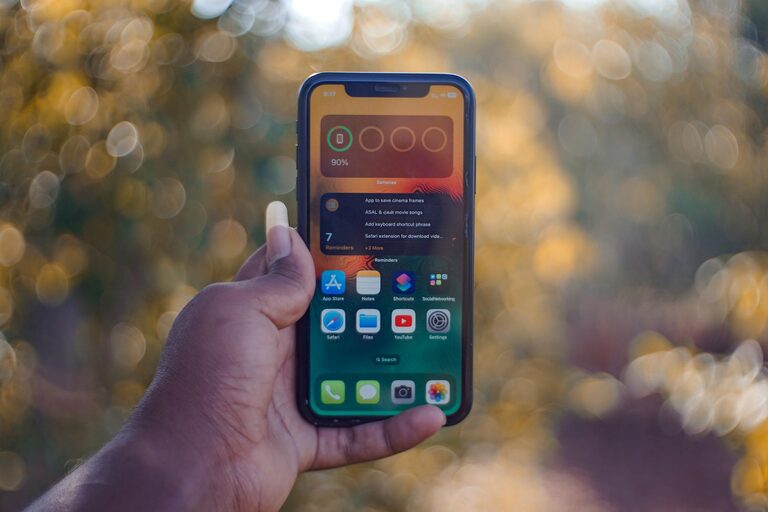Practical Tips for Setting Boundaries with Notifications

In today’s connected world, notifications are everywhere — from emails and social media to messaging apps and news alerts. While they help keep us informed, an overload of notifications can disrupt focus, increase stress, and reduce overall productivity. Learning to set clear boundaries with notifications is essential for reclaiming your time and maintaining balance.
In this post, we’ll explore practical tips and strategies to manage notifications effectively, so you can stay in control of your digital life without missing important updates.
Why Set Boundaries with Notifications?
Notifications are designed to grab your attention, often interrupting your workflow or downtime. Without limits, they can create:
– Constant distractions and fragmented attention
– Increased stress and anxiety
– Difficulty concentrating on tasks or conversations
– Disrupted sleep patterns from late-night alerts
By setting boundaries, you can create a healthier relationship with your devices, boost productivity, and enjoy more focused, calm moments.
Assess Your Current Notification Habits
Before adjusting settings, take a moment to observe how notifications currently affect your day.
– Which apps or services send you the most notifications?
– How often do you check your device after receiving a notification?
– Do notifications interrupt meetings, family time, or sleep?
– Are there alerts you never respond to or find unnecessary?
Understanding your habits helps you prioritize which notifications to keep and which to minimize or disable.
Tips for Setting Boundaries with Notifications
1. Customize Notification Settings
Most smartphones and apps allow granular control over notifications. Tailor settings to suit your preferences:
– Turn off non-essential alerts: Disable notifications for apps that aren’t urgent or important.
– Use “Do Not Disturb” or Focus modes: Set scheduled quiet times, like during work hours or bedtime.
– Prioritize important contacts and apps: Allow notifications only from key people or essential services.
– Choose how and when notifications appear: Opt for silent banners instead of sounds or vibration for less disruptive alerts.
2. Establish Notification-Free Zones
Create physical or temporal spaces where notifications are minimized or off, enhancing concentration or relaxation:
– No-device zones like the dining table or bedroom can promote presence and restful sleep.
– Allocate specific times to check notifications instead of reacting immediately. For example, review emails twice daily instead of constantly monitoring.
– Use airplane mode or serious “do not disturb” periods during deep work or family activities.
3. Use Aggregated Notification Apps or Features
Some apps bundle notifications into summaries delivered once or twice daily, reducing constant interruptions and grouping alerts by priority or category.
4. Disable Push Notifications in Favor of Manual Checks
If you find notifications overly distracting, switch off most push notifications and develop a habit of manually checking apps at convenient times.
5. Manage Email Notifications
Email is a major source of alerts, especially for work:
– Set filters to prioritize important messages.
– Consider turning off new email alerts and checking inbox at scheduled intervals.
– Use different apps or notification settings for personal and work emails to avoid constant mixing.
6. Communicate Your Boundaries
Inform you family, friends, or coworkers about your notification preferences to set expectations:
– Let them know your preferred times for responding.
– Encourage use of urgent communication methods only when necessary.
– Sharing these boundaries helps reduce pressure to be always “on” and builds mutual respect.
7. Review and Adjust Regularly
Boundaries may need tweaking over time as priorities and workflows change.
– Periodically review notification settings.
– Remove apps you no longer use or need alerts from.
– Pay attention to how notification habits impact your focus and mood, and adjust accordingly.
Benefits of Setting Notification Boundaries
Implementing boundaries has tangible benefits:
– Improved focus and efficiency during work or study
– Reduced stress and feeling less overwhelmed
– More meaningful interactions during personal or family time
– Better sleep by limiting nighttime disruptions
– Enhanced digital wellbeing and mindfulness
Final Thoughts
Notifications are a helpful tool but managing them consciously is key to avoiding distraction and burnout. By customizing settings, creating mindful habits, and communicating boundaries, you can take back control of your day and enjoy technology on your terms.
Start small — try muting a few apps or scheduling “quiet hours”— and build from there. The fewer disruptions you allow, the more present, productive, and peaceful your life can be.
—
Do you have your own tips for managing notifications? Share your experiences in the comments below!
